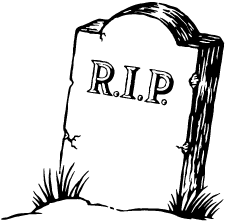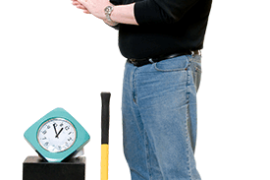 The Adam Smith, Esq. blog, published by Bruce MacEwen, covers the topic of law firm economics really well. His latest series on Growth is Dead lays out some pretty heavy schooling for law firms; stressing the need for experimentation, acceptance of failure, and the virtues of resilience, among other things that are not typically in the legal profession’s emotional wheel-house. Good thing he didn’t pick on marketing, too much. That’s my job and I’m going to pick up the slack today.
The Adam Smith, Esq. blog, published by Bruce MacEwen, covers the topic of law firm economics really well. His latest series on Growth is Dead lays out some pretty heavy schooling for law firms; stressing the need for experimentation, acceptance of failure, and the virtues of resilience, among other things that are not typically in the legal profession’s emotional wheel-house. Good thing he didn’t pick on marketing, too much. That’s my job and I’m going to pick up the slack today.
First things first.
How we, chief marketing and business development executives, are viewed by our organizations during these extremely tense times will depend on how well we integrate a marketing and client service mix that resonates with the needs of the well-informed, thank you very much Internet, consumer in the new order—including general counsels and procurement departments. Now-get-this: prime addresses, billable hours, and cross selling are no longer winning over clients, nor are they edging out the competition for new business. Yes, I understand that marketers often have to work with difficult and inconvenient truths to get their jobs done. But, don’t discount…
Product, Price, Promotion, Place IS DEAD.
Marketers around the world, beginning sometime in the 1940’s, subscribed to a popular mass marketing theory known as the marketing mix, or the 4P’s—product, price, promotion, and place—to identify unique selling propositions and position products and services among competitors in the marketplace to gain advantage.
- Product: A tangible good or intangible service that satisfies a consumer need or want. *Where the exact product or service is lacking consumer need, the marketer must attempt to fit the consumer into the product/service they offer by creating need, which is way more difficult: reference cross selling below.
- Price: What the consumer pays. (Company profits and market competition dictate pricing.)
- Promotion: Various methods used by marketers to broadcast information about the product or service to masses of consumers.
- Place: Giving your product or service a place that is easy for the consumer to access. Synonymous with distribution.
This methodology, which was fully embraced by law firm marketers when I entered the field in 1995, continues in some firms today. News alert: It’s dead.
The EMPOWERED CONSUMER is ALIVE.
Near the end of the last century, 1993 to be exact, the 4Ps and mass marketing were tossed aside in favor of more consumer-oriented model when Robert F. Lauterborn first wrote about integrated marketing using the 4Cs—consumer, cost, communication, and convenience.
- It’s not about your product; it’s about the CONSUMER experience.
- It’s not about your price; it’s the total COST of ownership.
- It’s not about your promotions; it’s two way COMMUNICATIONS.
- It’s not about your place; it’s about making it CONVENIENT for your clients and customers.
Now, I know that legal services marketing isn’t cutting edge, but isn’t it a natural for a consumer centric model—we don’t need no stinking theory? Yet, I hear law firm clients question bills, question services and give the profession a thumbs down at every turn, today! Could we really be that far out of touch? Maybe it’s just a hold over from the days when law firms were charging clients for pastries served in their conference rooms and adding a 40% mark up—a 1991 article from American Lawyer magazine that documents that very thing is appropriately titled “Skaddonomics“—because, just last Monday in the Wall Street Journal there was this article.
How can that be? Is all the copy on law firm websites touting “client first” jargon and “you’re number one” brands just lip service? Hey, marketers, you got the 1993 memo, right? But your hands are tied? Well, get this…it’s time to cut loose!
- Today’s consumer is empowered.
- Highly successful, younger corporations every day—think Zappos, Amazon, Apple, Southwest Airlines, and etc.—are beating out the competition by embedding exceptional consumer experience into their business and marketing models. Zappos doesn’t sell shoes, they sell service. And law firms need to take note: the consumer experience is HOT!
- We’re also seeing it take hold, slowly albeit, in a few great, older American institutions. Two examples I cite here are AT&T and American Airlines. (Proving that even established law firm could ratchet it up a bit, yes?)
- Contrary to MANY earlier experiences with AT&T, I had a recent experience with an AT&T sales associate by telephone where the agent took the time to ask the right questions, listen to my answers, and really worked to customize their services to my needs—no kidding. And, that’s not all! When I ran into a snag shortly after I called her back (she gave me her direct line) to relate my issues. Good to her word she helped me find a manager who, again, listened to my concerns, gave me the equipment I needed, gratis, solved the issues and left me not only feeling like a valued customer but also singing their praises! Is AT&T perfect? No. Am I a prefect customer, no. But, they transformed the formerly frustrating user experience into a positive simply by trying harder to understand me and yes, making a few concessions. That’s solid marketing!
- Just the other day, I received a “surprise” phone call from American Airlines in response to a feedback email I sent regarding a safety issue on a recent American Eagle flight. After apologizing for not getting back to me sooner, the agent communicated that she was genuinely concerned about my experience with the airline. How do I know this? She didn’t give me the typical “we’re so sorry” speech but thanked me for my time. She took notes (I could hear the typing), she then explained the actions she would take, and again thanked me for my time—a 15 minute conversation. Then, she popped a biggie: She asked if I had any other feedback about how the airline is serving me overall! Being a customer service aficionado, I offered her a few ideas. At the end of our meaningful conversation, she told me she had expected to contribute 10,000 air miles to my Advantage account, but thought my insights were so valuable that she dropped in 15,000. In the immediate picture our conversation reversed my frustration, which I had previously announced to my Twitter network. But, in the big picture, after I believed the airline sincerely acknowledged my safety concerns, I Tweeted about that too! That’s great marketing!
When a consumer speaks up, great corporations listen. And, so should law firm marketers.
Construct your marketing around the 4Cs.
CONSUMER/CLIENT: In the P-Product model, the law firm dictated which services they would offer and the client had to fit into the service. In the C-Consumer model, a law firm will focus on satisfying all the client’s needs—offering substantive expertise and flexible logistics. For example, cross-selling doesn’t work if it requires a client to FIT-INTO-YOUR-SERVICES. Cross selling only works if you are willing to provide exactly the additional services they need or want. What happens when those services aren’t in your portfolio? That’s for you to decide. But, at the very least a meaningful conversation between the law firm and prospect/client will demonstrate with actions, not words, that you are genuinely interested working on behalf of the client, not the profit center exclusively. Marketers need to be telling that story.
COST: P-Price is replaced by C-Cost. The billable hour is a PRICE model. The alternative fee is a COST model, but don’t stop there. There is more than the fee in the “total cost of ownership.” Total cost to the client might include things like the cost to change and implement new processes, build new relationships (takes time), and adjust to different technologies. In some cases, cost of ownership may even include the cost for not selecting a competitor’s service should things turn south. As you build your marketing strategy take into account the total cost from the client’s point of view. Marketers need to be telling that story.
COMMUNICATION: P-Promotion is about broadcasting messages to the masses. C-Communication implies a two way conversation is being had, ideally where both the consumer and the law firm gain important knowledge about one another. In promotions, the marketer chooses the channel. In communication, the consumer chooses. Conversations occur at events, meetings, on the street, in the subway, on the telephone. Today they also occur online. Social media conversations occur through videos, surveys, educational content, and more. Okay, I know, there are reasons why conversations with law firms don’t happen on social media. But, the top reason, IMHO, is that you’re stuck in promotion mode. Do your followers start conversations with you around the fact that you have 20 SuperLawyers? No. It really adds nothing to their experience with your law firm. Communication is not just an auto feed or marketing assistant who is only authorized to tweet the promotions. ‘Nuf said.
CONVENIENCE: C-Convenience replaces P-Place in the consumer experience. Convenience will not focus on what your law firm thinks is the best place to deliver your services and marketing communications but will seek to satisfy the consumer’s wants and needs specific to what is convenient for them. Experimentation, flexibility, and resiliency to failure are critical in this regard. Why? It involves experimenting with hybrid channels to enable access ease to communications and resources. It involves flexibility in addressing issues such transaction service time, hours of availability, or process. How easy you make it for prospects to find your services, to find more information about your services, and to receive a prompt response to an inquiry all make a difference in the buyer experience. It’s your job to make marketing, feedback, and service channels integrated: mobile, email, text messages, the cloud, social networks, and proprietary technologies. It’s a huge role, but it’s yours. Make it convenient for others to do business with you.
Fit your service to the need, or become irrelevant.
Today, 20 years after Mr. Lauterborn introduced the empowered consumer model, many, many law firm executives are unwilling to accept the burden. How do I know this? I see them struggle with diminishing profits and blame it on the economy. I see them puzzle over process improvement and go on doing things in the “its the way we’ve always done them” mode. (Seriously, I heard that just a few weeks ago!) I hear marketers talk about crossing selling and when nothing happens they blame it on the lawyers who don’t seem to get it. Note to self: All of these issues are embedded in the old 4P model. It doesn’t work with today’s consumer of legal services who is being spoiled by other products and services that are willing to go the distance.
What can we do?
- Empowered consumers have many options. Your job is to be one of them—ideally the best and only option.
- Multiple offices in dozens of cities with prime addresses and impressive lobbies are NOT essential to great client relationships and great marketing. People are essential. Quit cutting staff. Train staff. Embed a culture of giving instead of taking. I can’t tell you how many times I hear law firm staff admit they are just collecting a pay check. They do not have job satisfaction, but in a tight job market they are just hanging on. In my two examples above, I truly felt as if those agents sincerely cared about how they could improve the customer experience to keep their business. Though they both took a small hit, giving me a few extra concessions, they have a customer that is paying the bill and flying the airline.
- Marketing is never independent of service. Marketing is not just about alternative fees, your Facebook Page, your mobile website, or the adjectives you slap on your website copy—you cannot write your way into culture. Marketing is about how well you are able to integrate the 4Cs into your culture to deliver a superior brand experience for every client, large or small. That in thumbnail is your marketing strategy. Then, tell your story. Your true story.
Marketers often have to work with difficult and inconvenient truths to get their jobs done. I know this. That’s why I am sincerely interested in sharing content at the VMO to open discussion and improve our profession and the experience of our clients.
© LawGravity.com





What a fantastic post, and for me the big takeway is about listening to clients. law firms are starting to wake up to the fact that clients are in control not them, and that’s a big sea change.
Great post – lawyers also face the difficult issue that in a web based world a huge number of services as well as products are offered on a try before you buy basis. This is particularly difficult with law due to potential liability/retainer issues and the fact the client may then think they can get more for free. Nonetheless for some services a freebie may even be necessary with law with a view to getting a bigger piece of follow on work or relationship building.